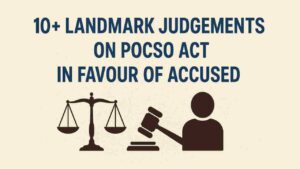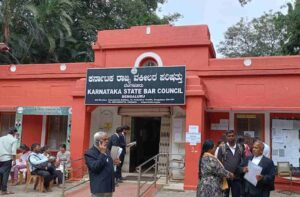The Bombay High Court’s Nagpur Bench has recently made a significant ruling regarding the definition of “ganja” under the Narcotic Drugs and Psychotropic Substances Act (NDPS Act).
In a landmark decision, Justice Urmila Joshi Phalke highlighted that “ganja” refers specifically to the flowering or fruiting tops of the cannabis plant, excluding seeds and leaves.
This clarification came during the bail hearing of a man accused of carrying a commercial quantity of cannabis.
The case in question involved Mohammad Jakir Nawab Ali, who was arrested on December 7, 2021, following a police raid prompted by intelligence about the transportation of contraband.
During the operation, local Crime Branch officers intercepted Ali’s vehicle, a white Maruti Swift, and reportedly seized approximately 50 kilograms of what was labeled as ganja from the back seat.
Court’s Observations
During the bail hearing, Ali’s defense counsel raised critical issues concerning the police investigation.
The defense argued that the seized material primarily consisted of leaves, seeds, stems, and stalks—none of which meet the NDPS Act’s definition of ganja unless accompanied by the flowering or fruiting tops.
Justice Urmila Joshi Phalke noted the importance of the correct identification and segregation of the seized contraband before weighing it.
The court highlighted that the investigation papers indicated that the materials were not appropriately segregated.
“The above state of affairs would make it clear that there is nothing on record to prima facie show that before carrying the weight of the seized plant of ganja, the investigating officer had segregated the seeds or the other parts of the plant in order to ascertain the exact quantity of ganja,” the Court stated.
Bail Grant and Implications
Given the lack of clear evidence regarding the nature of the seized materials, the court ruled that it was challenging to ascertain whether the quantity confiscated could be classified as a commercial amount, which is defined as over 20 kilograms under the NDPS Act.
The court’s observations were crucial, especially since the police had failed to accurately document the seized items, raising doubts about the validity of the charges against Ali.
Additionally, Ali’s counsel pointed out delays in the trial process, arguing that these delays violated his right to a speedy trial under Article 21 of the Constitution of India.
The Court referenced a recent Supreme Court ruling in Ankur Chaudhary vs. State of Madhya Pradesh, which reinforced that prolonged delays in trial procedures could infringe upon an accused person’s rights.
Ultimately, the Bombay High Court found that Ali had made a compelling case for bail. The ruling stated, “Thus, after perusal of the investigating papers, prima facie, the material complied with the charge-sheet, it is difficult to accept that the alleged prohibited substance is within the definition of ganja under the NDPS Act.”
As a result, the court ordered Ali’s release upon executing a personal bond of ₹50,000, with one surety of the same amount.
Additional conditions included reporting to the local police station once a month and refraining from engaging in similar activities.
Bench Details:
- Judgment by: Justice Urmila Joshi Phalke
- Bail Applicant: Mohammad Jakir Nawab Ali
- Advocate for Bail Applicant: RJ Mirza
- State Representation: Additional Public Prosecutor AJ Gohokar















